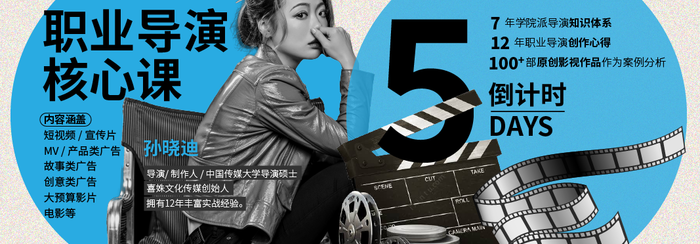索尼F3拍摄日本“机器人始祖”
#创作手记# #大画幅可换镜头#By Matthew Allard
关于Matthew Allard,Aljazeera高级现场摄影师,吉隆坡:Matt在电视新闻摄像/编辑了20年,以前为澳大利亚第9频道和10频道工作。两次获得网络十大澳大利亚年度最佳摄影师以及作为优秀摄影工作者。
(我查了一下如果没错Aljazeera指应该是这个网站:http://english.aljazeera.net/programmes/frames/)

Matt是在大阪拍摄的关于Karakuri的短片。现今的机器人若要问历史可追溯到这些设备。他们都已经有200-300岁了,是由江户时代的熟练技工们创造的。通过对重量和滑轮,这些古老的机器人能够在没有任何的电子或电源的情况下执行惊人的任务。
拍摄东野秀树工作
东野秀树是少数保持这些令人难以置信的绝活者之一。他的父亲最近患了中风,他继承了这些。
Matt想表现出错综复杂的细节,小体积,这些高精度的机器人。
这个能把这些地方拍摄得完美真的多亏了F3。它能够捕获如此高的动态范围,特别是对于一些关键的地方。从外向里拍工作间的同时街道不会过分曝光,在F3在这里处理得非常好。拍摄到的SxS卡上有4:2:0,35Mb/s的表现是也很好。通过付费固件拍摄的S-log也即将更新。此相机将有更惊人的能力。使用S-log可将摄像机的基础感光度增加到1600ISO。
用索尼F3加蔡司100mm拍摄
在拍摄中Matt使用了索尼的PL卡口定焦镜头(35,50和85mm),还有Tokina 11-16mm f2.8和蔡司ZF 100mm f2.0 微距镜头,后者到有用到MTF转F3的镜头适配器。一切拍摄都用的是自然光,除了Karakuri翻滚时用到了砂纸。Matt不喜欢用灯打光,他一直在设法达到尽可能的自然。这个故事多是使用蔡司微距镜头拍摄的,它超级敏锐,能为F3提供海量的细节。
“正如我以前所使用的佳能7D,5DmkII,1DmkIV和60d,人们必然要问我的相比起来主要的区别是什么。像F3,对我来说,最大的区别是易用性。所有的控制都在你指尖,内置ND,适当的声音,方便的记录格式,都很重要。至于影像,在我看来,在F3具有比单反开起来更加有质感。这样说,我是很爱5DmkII或是7D拍出的影像,单反有一个独特的画质,但它是通过大规模压缩。我注意到了与F3细节层次很细致,在拍摄的画面里我甚至能看到金属微妙的质感,人手指上的线和机器人衣服复杂的图案。”Matt说。
Matt表示自己喜欢F3超过5DmkII。但是,当然F3毕竟是一个更昂贵的摄像机。当一个摄像机被设计,那么它将不仅是一个摄像机。在拍摄中最重要的是该故事和故事里的人物。你可以做任何伟大的事只要它是一个好故事,无论你是否有一个阿莱Alexa或是佳能550D。设备可以帮助你,但最终还是要看你自己!


英文原文:
ChungMediaFilming Japan’s robot ancestors using the Sony F3 – for Aljazeera’s Frames
I shot this short film for Aljazeera’s Frames four days before the devastating earthquake and tsunami struck Japan.This is one of the first things I shot on my Sony F3. It had arrived for me in Tokyo on the first of February but I was unable to pick it up till the 28th. I managed to get the second production model ever made. I have been waiting for this camera since it was first announced back at NAB 2010 and it was definitely worth the wait.
I was in Osaka to shoot a short on the Karakuri (Japanese automata). Modern day robots can be traced back to these devices, which are 200-300 years old and were created by skilled craftsmen of the Edo period. By the use of weights and pulleys these ancient robots are able to perform amazing tasks without the use of electronics or power.
Filming Hideki Higashino at work
Hideki Higashino is one of the few who is keeping these incredible creations alive. His father recently had a stroke and is passing on his legacy to Hideki.
I wanted to show the intricate detail, small size and precision of these robots.
This shoot was the perfect place to really push the F3. Its ability to capture such a high dynamic range was especially crucial for a few of the shots. Shooting into the workshop from outside while trying not to over-expose the street and under-expose the workshop would test any camera. The F3 handled this amazingly well. Shooting onto the SxS cards at 4.2.0 35Mb/s showed just how good this camera is out of the box. With the ability to shoot S-log via a paid firmware update just around the corner, this camera will have even more amazing capabilities. Using S-log will increase the camera’s base sensitivity to 1600ISO. Truly spectacular for a camera at this price.
Shooting with the Sony F3 and Zeiss 100mm
For this shoot I used the three Sony PL primes (35,50 and 85mm) as well as the Tokina 11-16mm f2.8 and the Zeiss ZF 100mm Macro Planar f2.0, the latter two via a Nikon MTF to F3 adaptor. Everything was shot using available light except for the tumbling Karakuri and when Hideki was using the sandpaper. I don’t like over lighting things and try to keep things as natural as possible. A lot of the story was shot using the Zeiss macro. I cannot rave about this lens enough. It is super sharp and when mounted on the F3 provides incredible amounts of detail.
As I’ve previously used the Canon 7D, 5DmkII, 1DmkIV and 60D, people are bound to ask me what the main differences are compared to a camera like the F3. For me the biggest difference is ease of use. Having all the controls at your fingertips, built in ND, proper audio and a convenient recording format make all the difference. As far as image quality goes, in my opinion, the F3 has a more organic look than DSLR. Saying that, I still love the image that a 5DmkII or a 7D produces. The DSLR has a unique look but it is let down by massive compression. I notice with the F3 that the level of detail is incredible. On this shoot I could see tiny grains of metal, the lines on people’s fingers and the intricate patterns on the robots’ clothing.
Do I prefer the F3 over say a 5DmkII? Yes I do, but of course that should be the case as it’s a much more expensive camera. I can’t recommend it enough. It is a video camera by design and not a stills camera. The new breed of DSLRs will not just die off; they still do an amazing job and they are very hard to beat in terms of bang for your buck. Even with all the toys and expensive cameras out there, don’t lose sight of the fact that the most important aspect of shooting anything is the story and the characters within that story. You can make anything great if it’s a good story regardless of whether you have an Arri Alexa or a Canon 550D. Equipment can help but ultimately it comes down to you.
About Matthew Allard, Aljazeera Senior Field Cameraman, Kuala Lumpur:
Matt has been a Camera/Editor in TV news for 20 years, previously working for both Channel 9 and Channel 10 in Australia. Twice Network Ten Australia’s cameraman of the year as well as being a Walkley Finalist for outstanding camerawork in 2006 (for coverage of the Cronulla Race Riots) and a Logie Finalist for outstanding news coverage 2006 (Bali 9). He has covered news events in more than 30 countries, from major sporting events to terrorist bombings. Based out of the Kuala Lumpur broadcast centre in Malaysia he is an avid user and follower of new technology, shooting stories on HD broadcast cameras as well as new Canon DSLRs.
原文链接:http://www.dslrnewsshooter.com/2011/05/31/filming-japans-robot-ancestors-using-the-sony-f3-for-aljazeeras-frames/
编译:影视工业网 @纽扣
本文为作者 陈东 分享,影视工业网鼓励从业者分享原创内容,影视工业网不会对原创文章作任何编辑!如作者有特别标注,请按作者说明转载,如无说明,则转载此文章须经得作者同意,并请附上出处(影视工业网)及本页链接。原文链接 https://cinehello.com/stream/146779
